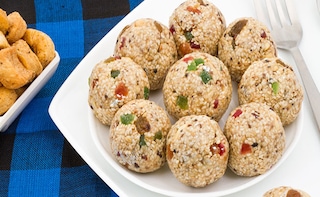If winters are here, can spring be far behind", the classic P.B Shelly line aptly sums the ethos of India's Makar Sankranti celebrations. Celebrated on 14th of January, Makar Sankranti is the harvest festival that is marked by suns' shift in position. Around 14th January, the sun enters Capricorn (Makar in Hindi and Sanskrit) and starts on its Northward journey, a transition called Uttarayan in Sanskrit. During the last quarter of the year, when the sun is travelling towards south, the crop harvesting takes a backseat because of limited sunlight and harsh weather conditions. Which is why when the sun embarks upon its journey to the north, it makes for a celebratory occasion for not just the agricultural community but for the entire country who had been struggling with the winter gloom.
Sankranti celebrations may differ from household to household, community to community but til or gur preparations are something common to several Sankranti celebrations. Be it Maharashtra's Til Papdi,Tilcha ladoo, and Puran Poli, or Bengal's Patishapta,Moa(laddoos made of puffed rice and jaggery), Nolen Gure Payesh or the til revdis from Punjab and up north, the Sankranti feast is one lavish affair we can brave the harshest of winters for.Here's to the spring that awaits, to the colourful kites and all the lovely festive treats. Here's wishing all of you a happy Makar Sankranti in advance!
Sankranti celebrations may differ from household to household, community to community but til or gur preparations are something common to several Sankranti celebrations. Be it Maharashtra's Til Papdi,Tilcha ladoo, and Puran Poli, or Bengal's Patishapta,Moa(laddoos made of puffed rice and jaggery), Nolen Gure Payesh or the til revdis from Punjab and up north, the Sankranti feast is one lavish affair we can brave the harshest of winters for.
For the latest food news, health tips and recipes, like us on Facebook or follow us on Twitter and YouTube.
Advertisement
